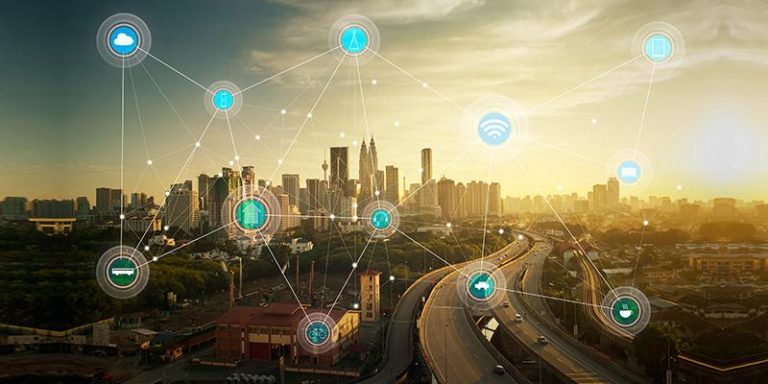
A smart city is a developed metropolitan area that excels in a number of critical areas, including economy, mobility, environment, people, lifestyle, and government. This results in sustainable economic growth and excellent quality of life.
Governments frequently invest in a variety of smart digital technologies when they start a smart city initiative. Together, these smart city technologies are intended to foster a sense of community, improve the quality of life for city dwellers, advance sustainability initiatives, strengthen infrastructure, and foster economic development.
Here are a few examples of innovative smart city solutions:
Cloud Computing
Cloud computing is widely used in various fields. Cloud is just the metaphor for the Internet. All things are available on the cloud and users can use all applications, and data when it is needed. With the help of cloud computing, various services can be available on the cloud, and citizens of a smart city can use these services very easily via the internet on their smartphones, laptops, and tablets.
Artificial intelligence (AI)
Artificial intelligence (AI) is the ability of a computer system to simulate cognitive processes that are similar to those performed by humans, such as data analysis, learning from new information, and problem-solving. The computer system resembles human reasoning by using logic and math to arrive at defensible choices. Artificial intelligence (AI) has the potential to be used in public transportation, where users of trains, buses, and other vehicles are given real-time information through their mobile apps about delays, breakdowns, and less congested routes. Additionally, AI and Smart Cities have the ability to increase power grid security and boost performance administration. In order to evaluate and forecast demand response and load clustering, smart grids—power networks, including generation plants—can read smart meters from vast amounts of data.
Prediction models can be set up on these grids to forecast the price and demand for energy for specific periodic intervals.
Internet of Things (IoT)
IoT sensors are being used by smarter cities all over the world to collect and analyze data quickly. City managers now have a better knowledge of what’s occurring in their neighborhoods almost instantly because of the insights given by IoT. Governments may connect intelligent infrastructure with this smart city technology, monitor procedures from a distance, track citizens in real time, and generally improve operations throughout the city.
Edge Computing
Edge computing refers to the idea of handling computing and storage in close proximity to where data is generated. In a smart city, data can be processed at the edge of a network in the sensors or gateways at the side of the road, with only aggregated interim results needing to be sent further afield to a data center for central processing.
Since data does not need to travel as far to be processed, edge computing also makes networks more resilient to disruptions. Applying this, edge computing promotes the development of the smart city and the improved performance of technologies like 5G and IoT systems.
When it comes to handling numerous tasks and responsibilities in a smart city, rugged tablets are unquestionably considered an asset. Rugged tablets are mobile and built to withstand harsh, real-world environments. They are flexible to integrate with existing systems keeping the development and maintenance of smart cities running smoothly. And because of their adaptability, rugged tablets can be easily integrated with the latest systems to maintain and develop smart cities, increasing the productivity and efficiency of smart city operations.
Rugged tablets are portable, handheld computers that can be taken into the field to be used for land surveying, utility line maintenance and repair, recording data on projects, and can even be used with Digital Twin technology as layouts for smart city planning.

